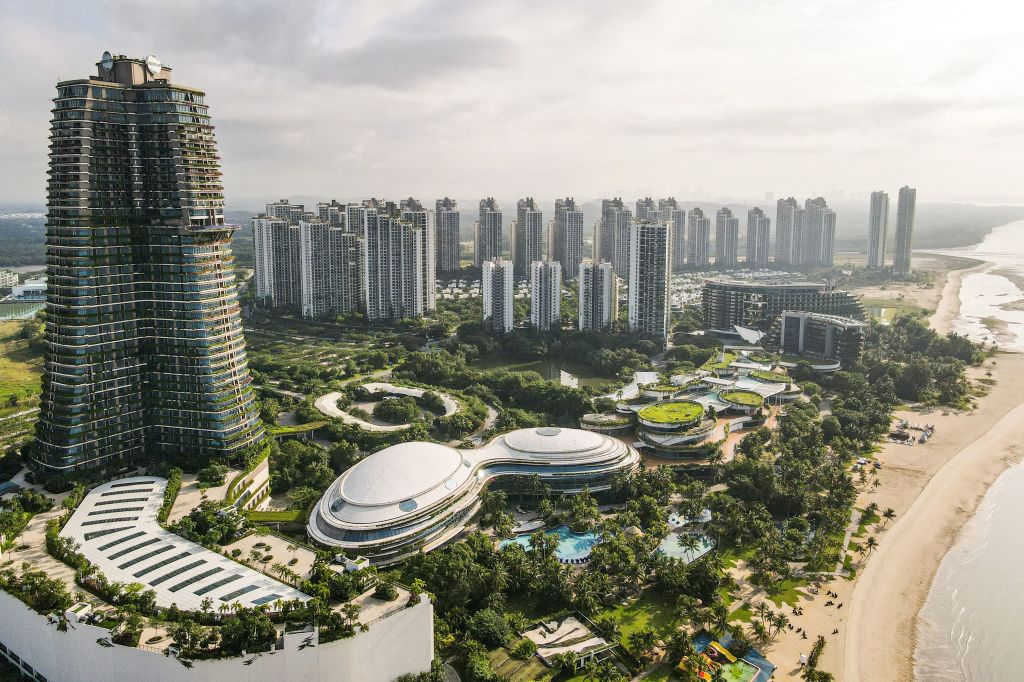A little slice of eco-heaven on earth could be yours. So goes the marketing for Forest City, a partially finished new city on the coast of Malaysia’s Johor state. Condo towers covered in plants and connected by public transit, rooftop gardens, a water-recycling system, and a vague commitment to “smart technologies,” all add up, the project’s Chinese developer says, to a “green futuristic city” that will serve as “a prime model” for other towns in our sustainability-focused era. The project boasts several awards for sustainable urban design, including one backed by the U.N.’s environment program.
But the reality is more complicated. Environmentalists say the city that sells itself as a planetary savior is actually a major threat to nature in the Johor Strait, a wildlife-rich strip of sea dividing Malaysia from Singapore. The four artificial islands that will form the development, which aim to house 700,000 people by 2035, are part of a wave of land reclamation projects that have seen millions of tons of sand being dumped into the strait’s waters in recent years. Local fishermen say the activity has triggered an exodus of fish species and damaged mangrove forests that normally absorb large amounts of planet-warming carbon dioxide from the atmosphere, and protect the coastline.
The brochure-friendly image of sustainability that developers tried to paste over that lost flora and fauna was ill-suited to Malaysia’s climate, says Serina Rahman, a lecturer in the Southeast Asian studies department at the National University of Singapore, who has followed the project closely. On the one Forest City island built so far, developers initially planted palms and cactuses. “It looked like an Abu Dhabi golf course. Those plants can’t survive here, because we have rain,” Rahman says. “There was a big lack of knowledge that led to what they were doing.”
Sarah Moser, an associate professor in McGill University’s department of geography and director of its New Cities Lab, who has also studied Forest City, is more critical. “It is greenwashing at its height,” she says.
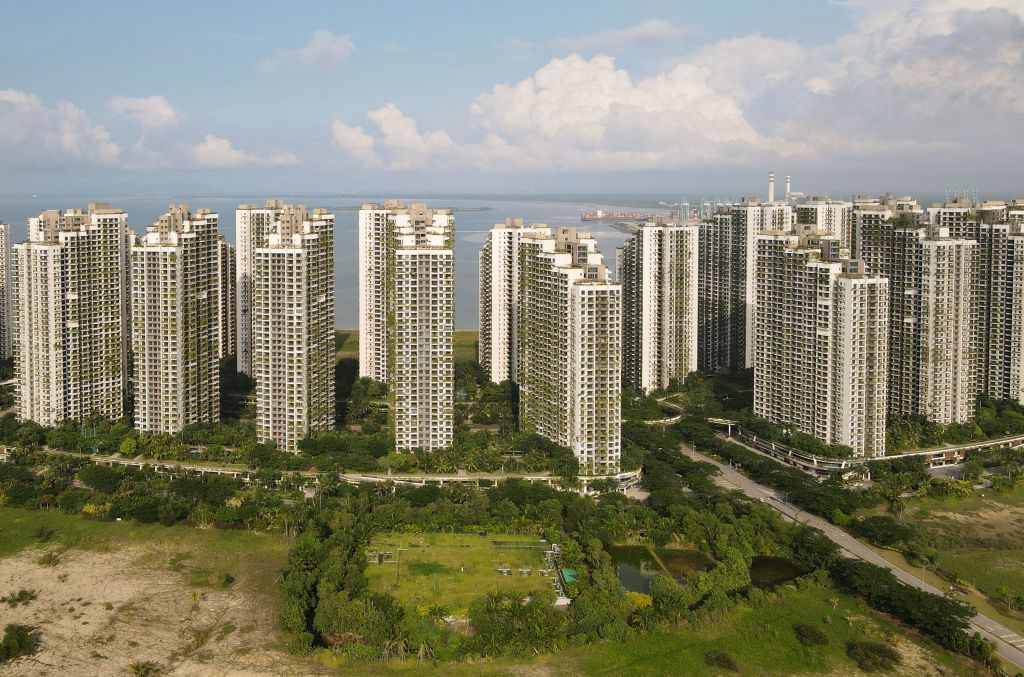
Forest City developer Country Garden refutes criticism of its environmental impact, telling TIME it has “never neglected the natural landscape, environmental protection,” and complies with all environmental laws in Malaysia. Rahman also says the project has worked to improve its relationship with nature and local communities since construction.
But the development’s hotly debated green credentials are a warning for dozens of other new city projects that present themselves as hyper-sustainable.
At least a quarter of the 170 new cities announced since the late 1990s—mostly in the Global South—market themselves with some variation of the term “eco-city,” according to Moser’s research. Examples can be found from Mexico to Kuwait to the Ivory Coast. You’ve probably seen some of them. The most famous and outlandish are Saudi Arabia’s The Line, billionaire Marc Lore’s city of Telosa proposal for the western U.S., and musician Akon’s beleaguered Akon City in Senegal. All have made headlines for their proposed high-tech climate solutions like flying driverless electric cars, or an impossible-to-build mirrored wall to reflect heat.
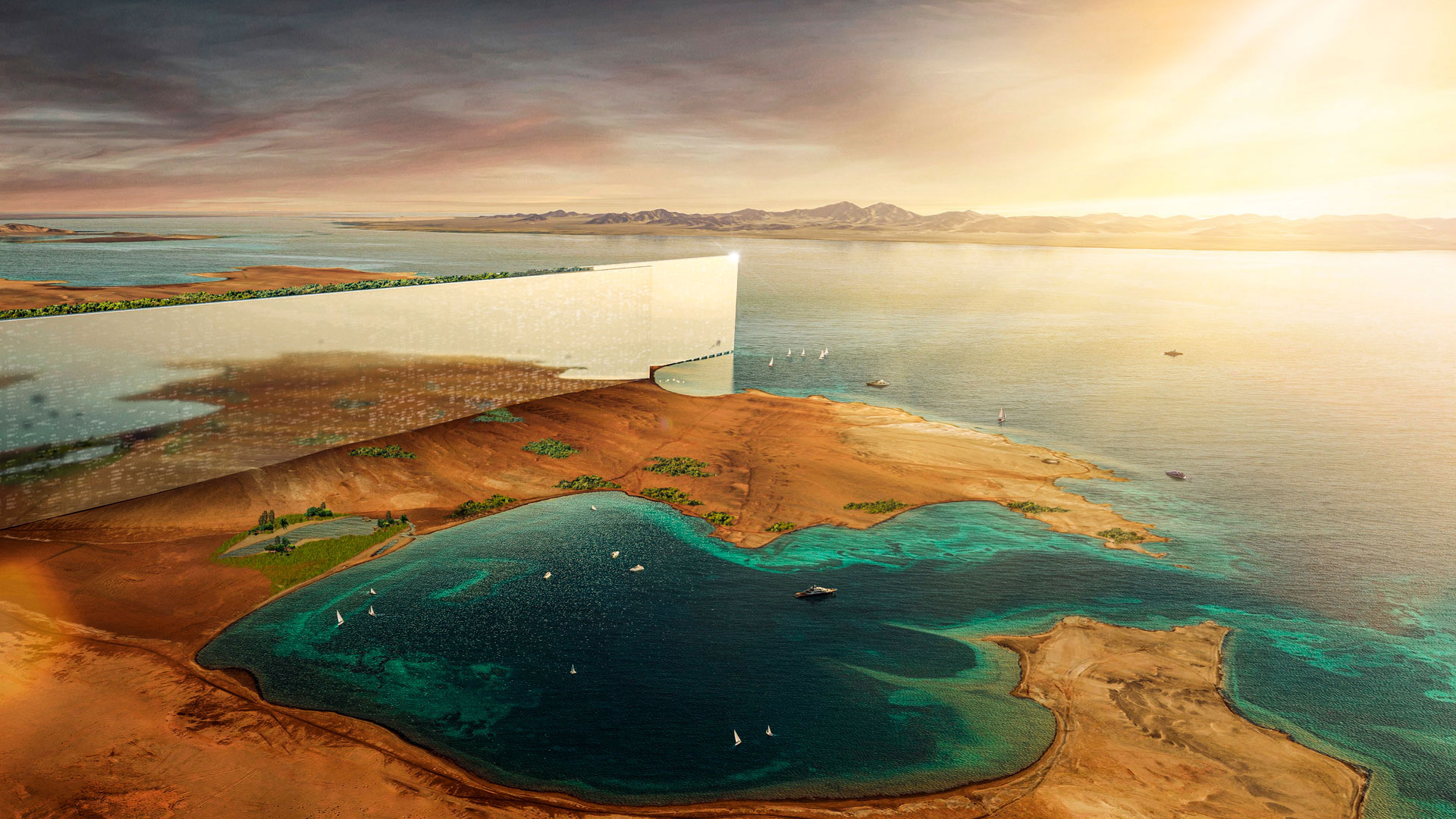
The business people and politicians behind these projects argue that they will lead us into a greener world. They will not only house the millions of people needing homes in the coming decades in the most environmentally friendly way possible, but also act as laboratories for eco-innovations that existing cities can’t deliver. “A new city built from scratch avoids the legacy issues of infrastructure and policies that constrain and restrict what can be developed,” a spokesperson for Telosa tells TIME. “The mission of Telosa is to create a more equitable and sustainable future.”
The “eco-city” concept has become a buzzword for developers in an age where almost everyone agrees that protecting the planet is a good thing. But what that means in practice is poorly understood among investors, potential residents, government officials, and the public. “Forest City’s ornamental lawns and vertical gardens look like sustainability to the average investor, because we are illiterate when it comes to sustainability,” Moser says.
Urban planning experts say many “eco-cities” do little to help nature beyond planting a few trees, while others inflict serious harm on the local environment and devote vast non-renewable resources to lofty plans that don’t pan out. And the majority are built primarily for the rich—failing to answer the very real need for new housing in fast-growing regions of the Global South.
It’s worth mentioning that many of these eco-cities will never make it out of the PowerPoints used by their marketing teams, limiting any environmental impact, good or bad. But in the decades where we urgently need to cut emissions, Moser argues that high-tech eco-city projects like Forest City and The Line are no longer just an entertaining curiosity, but a dangerous distraction. “It’s sucking oxygen out of discussions about real climate solutions that we have today and we know we need to implement,” she says. “These projects do enormous harm.”
Planning for Population Growth
There is no doubt that much of the world needs new urban areas. Africa’s population is set to at least double by 2050, with two thirds of the new residents expected to live in cities. The Middle East’s population will grow by more than a third over the same period, with seven countries becoming more than 90% urban. To house all those new city dwellers, while fighting and adapting to global warming, scientists say we urgently need to find greener ways of building.
And in some cases, existing cities are being threatened by rising environmental crises, creating a need to replace them. Indonesia is a prime example. The country is building a new capital, Nusantara, on the island of Borneo billed as a “forest city” that will be “carbon neutral” by 2045. Local NGOs say Nusantara—initially planned for a small, already deforested area in the middle of Borneo’s rainforests—will lead to massive deforestation and the displacement of Indigenous people. Activists also fear shaky plans to offset carbon emissions conceal the project’s real climate toll. (Nusantara’s developers did not respond to a request for comment. Local officials say they are taking steps to protect Indigenous land rights.) Despite the risks, however, Indonesia’s government says Nusantara is badly needed to replace Jakarta. The capital city of 10 million people is sinking due to the over extraction of groundwater and sea level rise. One third of it may be underwater by 2050.
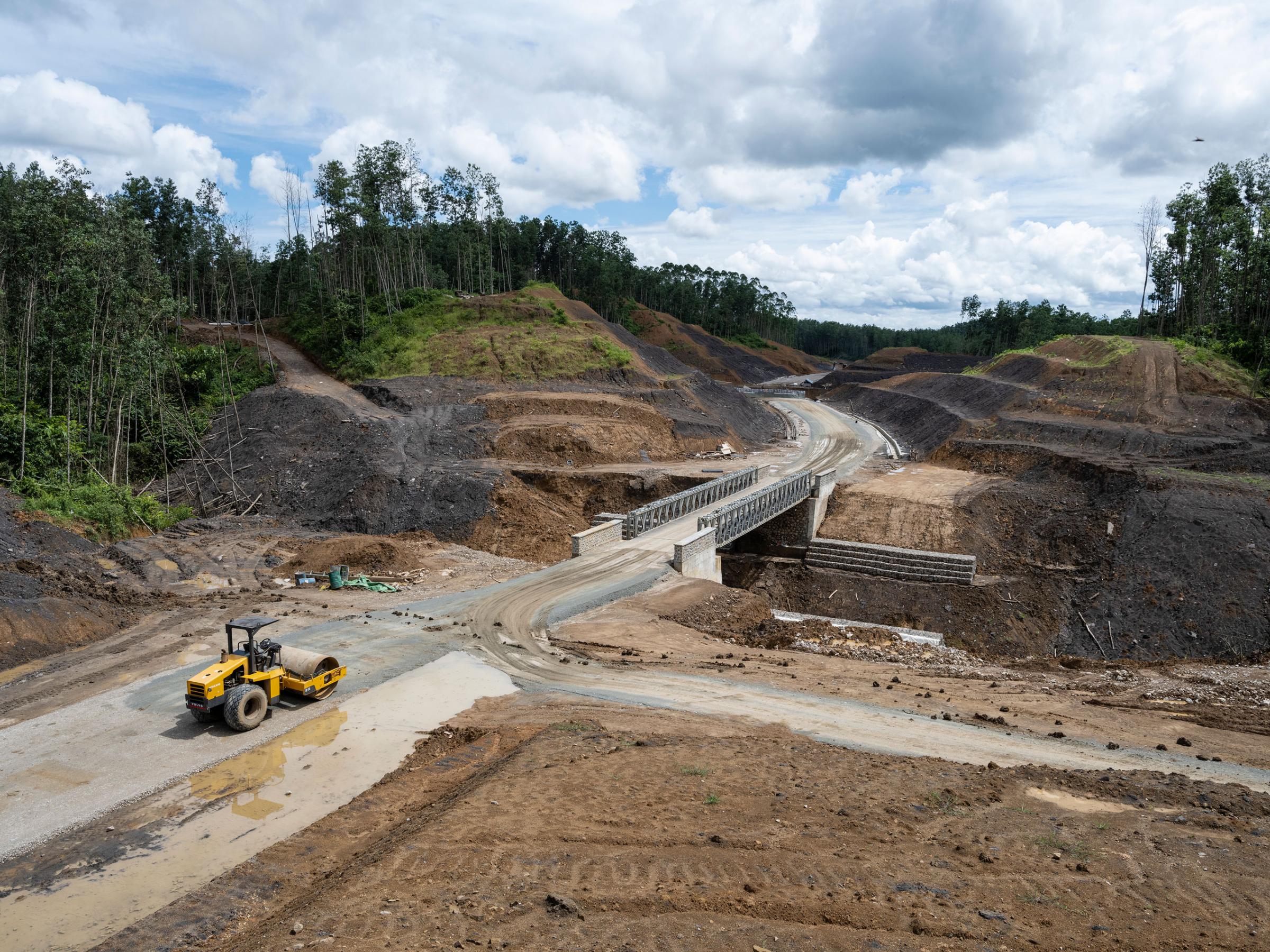
Those demographic and environmental challenges are real. But the current global wave of “cities of the future” may not help.
To understand why, it helps to look at Saudi Arabia’s previous grand new city plan. In 2005, long before The Line’s marketing blitz, the Saudi government launched King Abdullah Economic City (KAEC). Named for current crown prince Mohammed Bin Salman’s predecessor as the kingdom’s leader, the city on the western coast, 90 miles north of Jeddah, was meant to be a manufacturing hub housing 2 million people by 2035. Planners envisioned a system of canals and lush greenery to draw in prospective residents. Almost two decades and billions of dollars later, though, the city’s population hovers at around 10,000, according to media that have visited.
The project’s problems are partly political: King Abdullah’s death and a series of financial crises led the government to scale back its plans (including nixing the resource-intensive canal system). But it also struggled with the perennial challenge for new cities: how do you convince millions of people to move somewhere without an established economy? While the project is still trundling along, now overshadowed by The Line, critics doubt it will ever get near its targets. “If KAEC was viable the city would have taken off a long time ago. Their marketing was amazing but the whole concept behind it was flawed,” a former government adviser told the Financial Times in 2018. “The economic base was never there.”
Even when city megaprojects are delivered, urbanists say they rarely provide the kind of housing most people in a country need. The companies and countries that invest millions in these megaprojects expect returns, meaning building affordable homes is rarely the priority. In Zimbabwe, for example, a new capital being built to replace Harare, funded by a billionaire and Chinese state-owned companies, has been dubbed “a city for the rich” for its homes that cost hundreds of times the annual per capita income.
The Resource Question
At their core, most eco-cities’ claims to offer a model of sustainability elide a deeply unsustainable use of resources. TIME reviewed two dozen green city projects and found the most popular sites for them are off coasts or in deserts. Building in the former, as in Forest City, requires sourcing huge amounts of sand, which because of a global shortage is often dredged from sensitive marine environments or taken from coasts on which communities rely. Building in the latter, as in Kuwait’s South Sabah Al-Ahmad, makes future residents, and their green lawns promised in marketing, dependent on desalination plants—an energy intensive method of removing salt from seawater that in most places relies on fossil fuels.
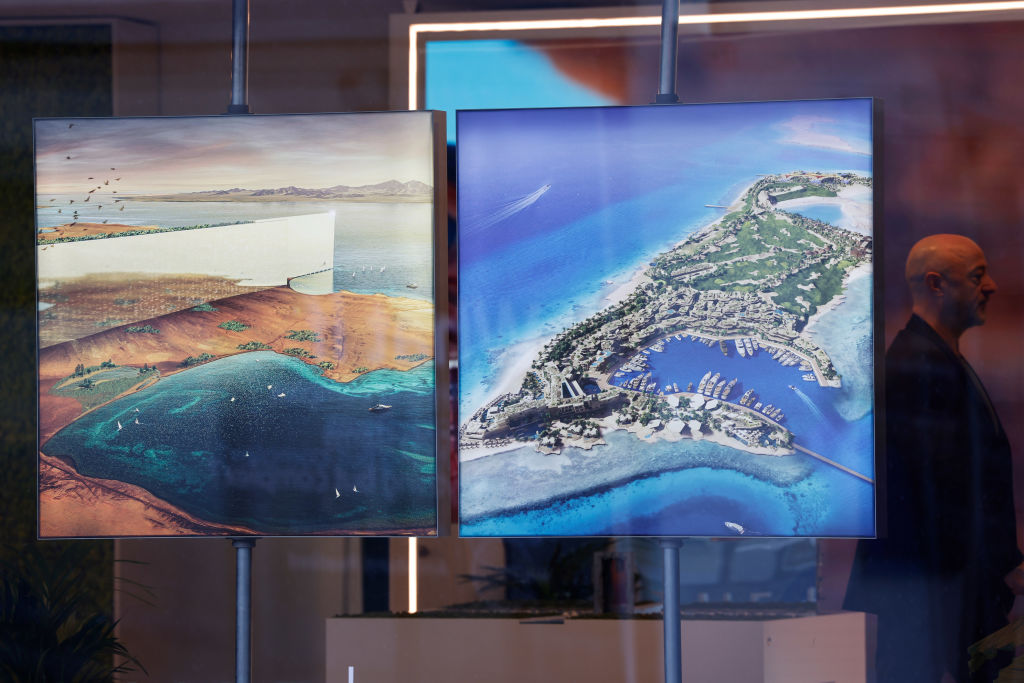
And while projects boast buildings powered by renewable energy and connected by EVs or cycling routes, limiting the carbon emissions of operating them, the building process itself is likely to be extremely polluting. Architects have estimated that Saudi Arabia’s glass and steel-filled plan for The Line would generate 1.8 billion metric tons of carbon dioxide. That’s the equivalent of almost three years of Saudi Arabia’s total annual emissions. (The Line’s developer did not respond to a request for comment.)
“It’s not just about making a green little bubble in the world,” Moser says. “These projects cast big shadows: where did the steel come from? Where did that generate pollution?”
Telosa, one of the less advanced eco-city initiatives out there, says it has a plan to not only limit its environmental footprint but provide solutions for other cities. On the carbon front, the city’s spokesperson says that, where possible, developers will use alternative, “lower impact” materials such as compacted earth and mass timber, which are increasingly championed by sustainable-minded architects.
Water issues, the spokesperson recognizes, are “a real constraint” in four of the five potential locations that Telosa’s backers are mulling: Nevada, Utah, Arizona, Texas, and the Appalachian region. But they say the project will build water recycling systems, “varied water harvesting and collection strategies,” and use education to bring Telosa residents’ water use far below the U.S. average of 82 gallons per day. “Overall, the goal is to conserve and reuse water while maintaining a high quality of life for residents and to create a blueprint that can serve other cities.” It will likely be decades before we know if that ambition pays off.
Local Threats
One of the biggest problems with “green cities” is developers’ failure to understand the local communities and environments they intend to build in, says Rahman, the Singapore-based researcher. Soon after construction began on Forest City in 2014, Singapore complained to Malaysia that its developer hadn’t done enough research on the potential trans-border impact of their land reclamation work. In response, officials temporarily halted the project and set up a public meeting for locals to share concerns about the impact on the Johor Strait. “The developers seemed surprised at the amount of wildlife that was in that area,” Rahman says. “They thought it was just an empty strait with no value because not much is really studied except by the local community.”
The developer, Country Garden, tells TIME that it fulfilled all legal requirements for environmental assessments in Malaysia. It also “actively engaged with the surrounding community including the Indigenous people, fishermen, and local NGO [including] Kelab Alami and Malaysian Nature Society” from the inception of the project, as well as working with local environmental consultants to “monitor the surrounding ecology, hydrology, seagrass, and improve the surrounding marine ecosystem.”
Rahman says things did improve somewhat after the stop-work order, and credits Forest City for efforts like programs to restore lost mangroves, and foster wildlife on the reclaimed island, as well as their eventual decision to replace their imported palms with local plants. But the land reclamation risks for the Johor Strait remain. Developers say there are no plans to cancel three more planned islands, despite a pandemic lull in sales.
Reimagining Urbanization
If new city projects have to go ahead, Rahman says developers need to spend more time talking to local people who know their homes best. “You can’t just talk to the same small group of consultants, or the heads of [local organizations]. You have to include the average person sitting on the street, sitting in their boats, or sitting on their farms.”
But urbanists say it is generally better to focus on expanding the capacity of existing cities rather than starting from scratch in a new location—both for the environment and economic viability. “A surer bet is to study where people are already moving, which means where future urbanization is likely to happen,” writes urban economist Astrid R.N. Haas of Africa’s coming population explosion. That approach allows planners to prepare mid-size cities to grow in an orderly way, with well-designed, climate-conscious transit and infrastructure.
Density can also help. Urban planners in many regions are trying to balance the need for green space in cities with efforts to fit more people in the same amount of space. Building apartments in under-used sites, so-called “urban infill” allows towns to accommodate more people, with less impact on the environment and reduce the need for people to make long car journeys from suburbs into city centers.
The buildings in those expanded, densified cities need not be high-tech structures covered in mirror glass or vertical farms in order to be sustainable. Architects in Global South countries including Senegal and Pakistan are promoting a return to traditional forms of building, using mud or bamboo. These natural materials have a far lower carbon footprint than concrete and steel, and do not trap as much heat from the sun, reducing the need for electrical cooling. With modern construction technologies incorporated, they can also compete on resilience and be used in multi-story structures.
“We already know all the things we need to build sustainably: urban regeneration, urban infill—that’s the real innovation,” says Hélène Chartier, director of urban planning and design at C40, a coalition of climate leader cities. When she looks at eco-city projects like The Line, she adds, “I think this isn’t the future, this type of project is a project of the past.”
More Must-Reads from TIME
- Cybersecurity Experts Are Sounding the Alarm on DOGE
- Meet the 2025 Women of the Year
- The Harsh Truth About Disability Inclusion
- Why Do More Young Adults Have Cancer?
- Colman Domingo Leads With Radical Love
- How to Get Better at Doing Things Alone
- Michelle Zauner Stares Down the Darkness
Write to Ciara Nugent at ciara.nugent@time.com
